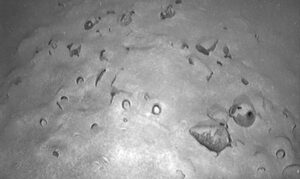A passion for the natural world drives many of our adventures. And when we’re not outside, we love delving into the discoveries about the places where we live and travel. Here are some of the best natural history links we’ve found this week.
Facial recognition for seals: Students at Colgate University in New York are developing a database called SealNet that will use facial recognition technology to identify individual harbor seals.
Over two years, the team took over 2,000 images of seals and manually identified them using their nose, mouth, and eye positions. The software they are developing uses deep learning and a neural network to differentiate between seal faces. So far, it has been able to match faces 85% of the time.
A bounty of fin whales
Conservation success in Antarctica: Researchers have witnessed the largest gathering of feeding fin whales ever recorded, with over 150 individuals. It occurred off Elephant Island, northeast of the Antarctic Peninsula.
The Southern Ocean is a known feeding ground for the large whales, but commercial whaling until 1976 and climate change caused a 99% decline in their numbers. This mass feeding event of over 150 fin whales is a glimmer of hope for whale populations and highlights the success of the commercial whaling ban.

Fin whale. Photo: Shutterstock
Medical knowledge vanishes as Indigenous languages die: Uldarico Matapi Yucuna, 63, is considered the last shaman of the Matapi, in the Columbian Amazon. Yet he does not accept the shaman title, since he has been living separately from his people for 30 years.
During this time, he has tried to write down everything he knows. His father, also a shaman, taught him everything he knows, including how to create medicines from plants. There are now just 70 Matapi living along the Mirití-Paraná River. As their language and traditions die out, so does their abundant medical knowledge.
This is the case with many indigenous groups. Forty percent of the world’s 7,000 indigenous languages are in danger. “Every time an Indigenous language dies, it’s like a library is burning,” said biologist Rodrigo Camara Leret.
Of the more than 12,000 medicinal uses of plants across North America, 75% are only available in an indigenous language.
A T. Rex lookalike
A new dinosaur with tiny arms: The Tyrannosaurus rex is distinctive because of its huge head and tiny arms. Paleontologists have now found another species of carnivorous dinosaur with these features.
Meraxes gigas lived 90-100 million years ago, but it wasn’t part of the Tyrannosaur lineage. Rather, it belongs to the carcharodontosaur group and died out 20 million years before the T. Rex evolved.
Researchers still can’t explain why both these dinosaurs had tiny arms, but this discovery suggests they had a purpose since two different lineages of dinosaurs evolved the trait independently. The little arms may help them to stand from a reclined position, or not to get in the way of group feeding.
New protected area in South Georgia and South Sandwich Islands: On July 5, the government of the South Georgia and South Sandwich Islands declared their total land mass as a protected area. The islands are surrounded by 1.24 million square kilometres of protected marine environments. The government has now protected 3,800 square kilometres of land as well.
It means that all tourists will need a visa to visit the South Sandwich Islands. Visitors can still enter South Georgia, but enhanced protections will be put into place over the next 12 months.

Photo: Shutterstock
Mosquitoes attracted to sick prey
A person’s scent can make them more attractive to mosquitoes: Mosquitoes cause hundreds of thousands of deaths per year. The insects locate their hosts using a person’s body temperature, scent, and carbon dioxide.
Researchers discovered that when mice carried a virus, it changed their scent. Mice with different mosquito-borne diseases were placed in chambers alongside those that were uninfected. Mosquitoes were more drawn to the odor of the infected mice. The odors contained 20 chemical compounds, including three that caused a significant response from the mosquitos.
Is this also true with humans? When scientists applied one of the compounds, acetophenone, to human skin, it did increase the number of insects. People with dengue fever and Zika virus also produce this compound. If uninfected mosquitoes are more attracted to people with the disease, there is a higher chance that previously uninfected mosquitoes will become disease vectors as well.






